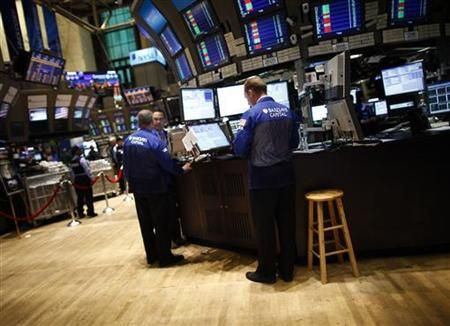Dow Plummets, When Does NYSE Pause Trading?

The Dow Jones Industrial Average plummeted in Thursday trading, dropping more than 3 percent at certain times after Federal Reserve chairman Ben Bernanke introduced Operation Twist to jump-start the slumping economy.
At one point, the Dow Jones fell more than 400 points, while the S&P 500-stock index and the tech-heavy Nasdaq also saw big drops. In recent trading, the S&P and Nasdaq both fell more than 3 percent.
The global broad selloff by investors raises the question: At what level do circuit breakers cut in to stop a stock market from crashing?
For Dow Jones, it depends on the time of trading and the percentage lost. Each quarter, the New York Stock Exchange and the DJIA put together numbers that represent 10, 20, and 30 percent of the index.
The first circuit breaker comes in if the DJIA loses 10 percent of its index, or 1,200 points, before two p.m. ET. In such a scenario, the market shuts for one hour; if happens between 2 p.m. and 2:30 p.m., the market shuts for 30 minutes.
The second circuit breaker comes in if the Dow Jones average loses 20 percent of its index, or 2,400 points, in a trading day. If the breaker trips before one p.m., trading stops for two hours, and one hour for any time after one p.m.
Finally, there is the third circuit-breaker. That is triggered if the index loses 30 percent, or 3,600 points. Whenever it hits a 30 percent drop, trading stops for the remainder of the day.
The circuit-breaker system was started in 1998 to prevent major stock market crashes. In 2010, individual stock circuit-breakers were introduced that can allow markets to put a five-minute trading pause on any stock that drops 10 percent or more in a five-minute time period.
© Copyright IBTimes 2024. All rights reserved.





















